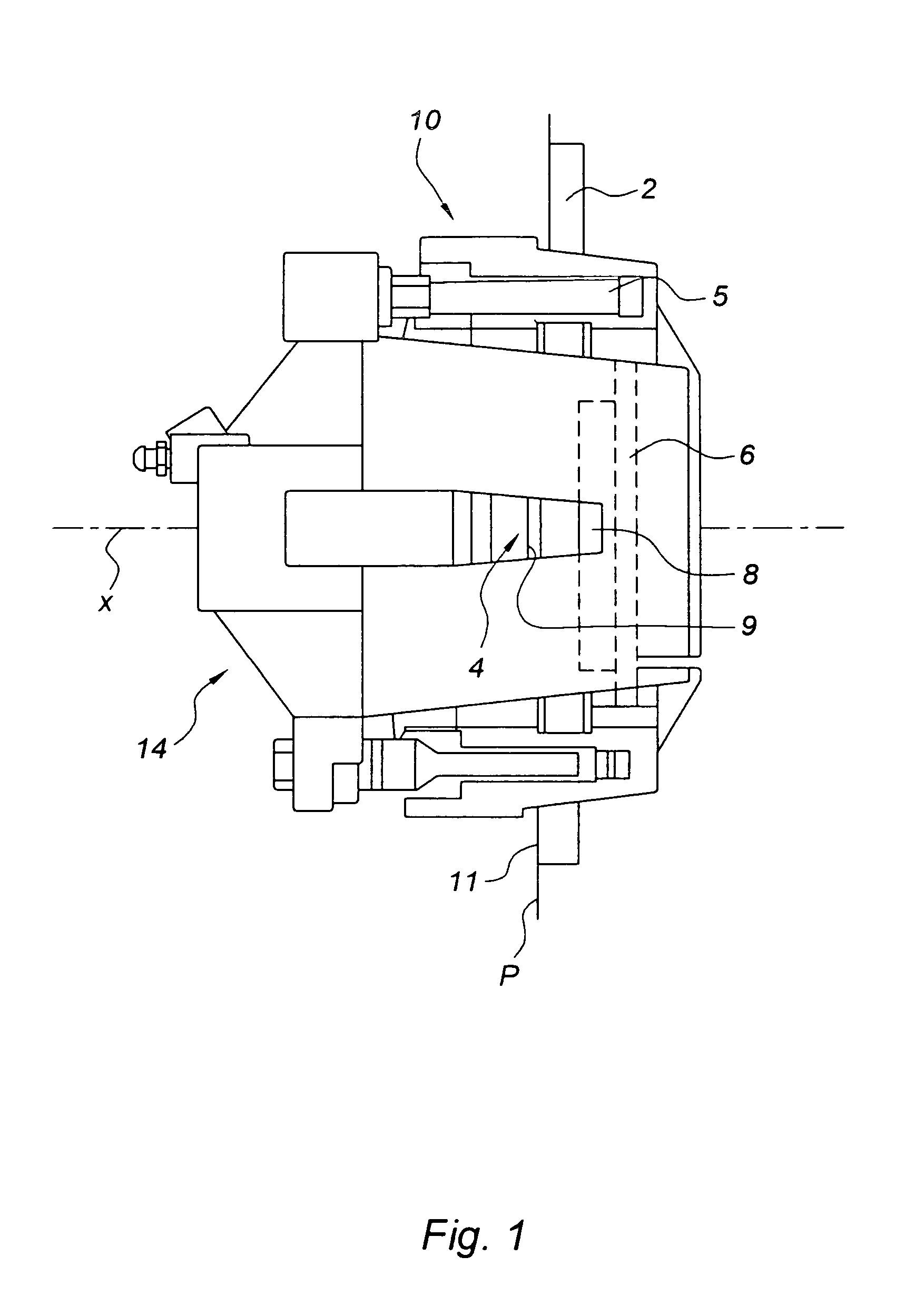Disc brake comprising at least one inclinable brake pad
a technology of disc brake and inclination, which is applied in the direction of fluid actuated brakes, brake types, mechanical devices, etc., can solve the problems of affecting the stability of the vehicl
- Summary
- Abstract
- Description
- Claims
- Application Information
AI Technical Summary
Benefits of technology
Problems solved by technology
Method used
Image
Examples
second embodiment
[0135]FIG. 7 shows a second embodiment for which the amplifier means 22 also make it possible to improve the operating safety of an electrical brake device.
[0136] The device has a braking force generator GN formed, for example, by a motor M1 applying a braking force to the piston 13 during a braking stage in order to press at least one brake pad against the brake disk.
[0137] The amplifier means 22 are interposed between the piston and the pad.
[0138] The brake device also has additional application means 50 for pressing the brake pad against the disk in the event that the generator GN or M1 fails.
[0139] For example, the application means comprise resilient means, e.g. a spring disposed between the piston and a fixed element upstream from the piston along the axis X.
[0140] In the event that the motor M1 fails, the spring 50 is released and it presses at least one brake pad against the brake disk. The means 22, and in particular the motor M2 pivot the half-cylinders (or half-sphere...
fourth embodiment
[0143]FIG. 8 shows a detail of the brake device of the present invention including means 22 forming the generator GN for generating a braking force EF and the amplifier for amplifying said braking force.
[0144] The first and second portions 24, 28 are of shapes making it possible, as they pivot, to bring the pad 4 towards the brake disk 2.
[0145] For example, the first and second half-cylinders (or the first and second half-spheres) form a cam of axis Y′ different from the axis Y and disposed in a recess of substantially circular section, the recess being formed by a first semi-cylindrical (or hemispherical) cavity carried by an element that is fixed relative to the brake pad and by a second semi-cylindrical (or hemispherical) cavity provided directly in the rigid support 6 of the pad or in an element secured to said pad, but nevertheless capable of being disunited from the pad while the brake pad is being changed.
[0146] It is also possible for the assembly formed by the first and t...
PUM
 Login to View More
Login to View More Abstract
Description
Claims
Application Information
 Login to View More
Login to View More - R&D
- Intellectual Property
- Life Sciences
- Materials
- Tech Scout
- Unparalleled Data Quality
- Higher Quality Content
- 60% Fewer Hallucinations
Browse by: Latest US Patents, China's latest patents, Technical Efficacy Thesaurus, Application Domain, Technology Topic, Popular Technical Reports.
© 2025 PatSnap. All rights reserved.Legal|Privacy policy|Modern Slavery Act Transparency Statement|Sitemap|About US| Contact US: help@patsnap.com



